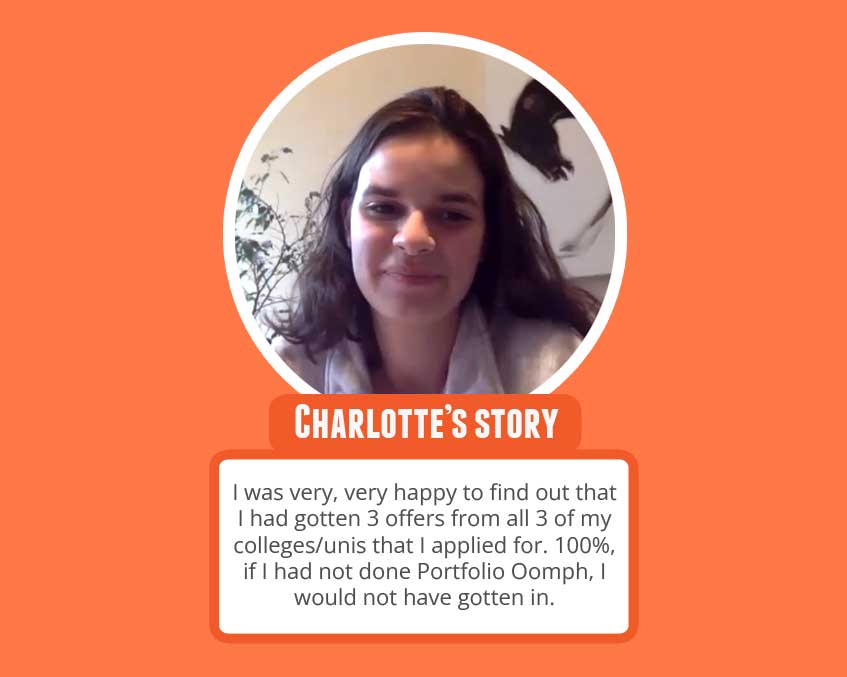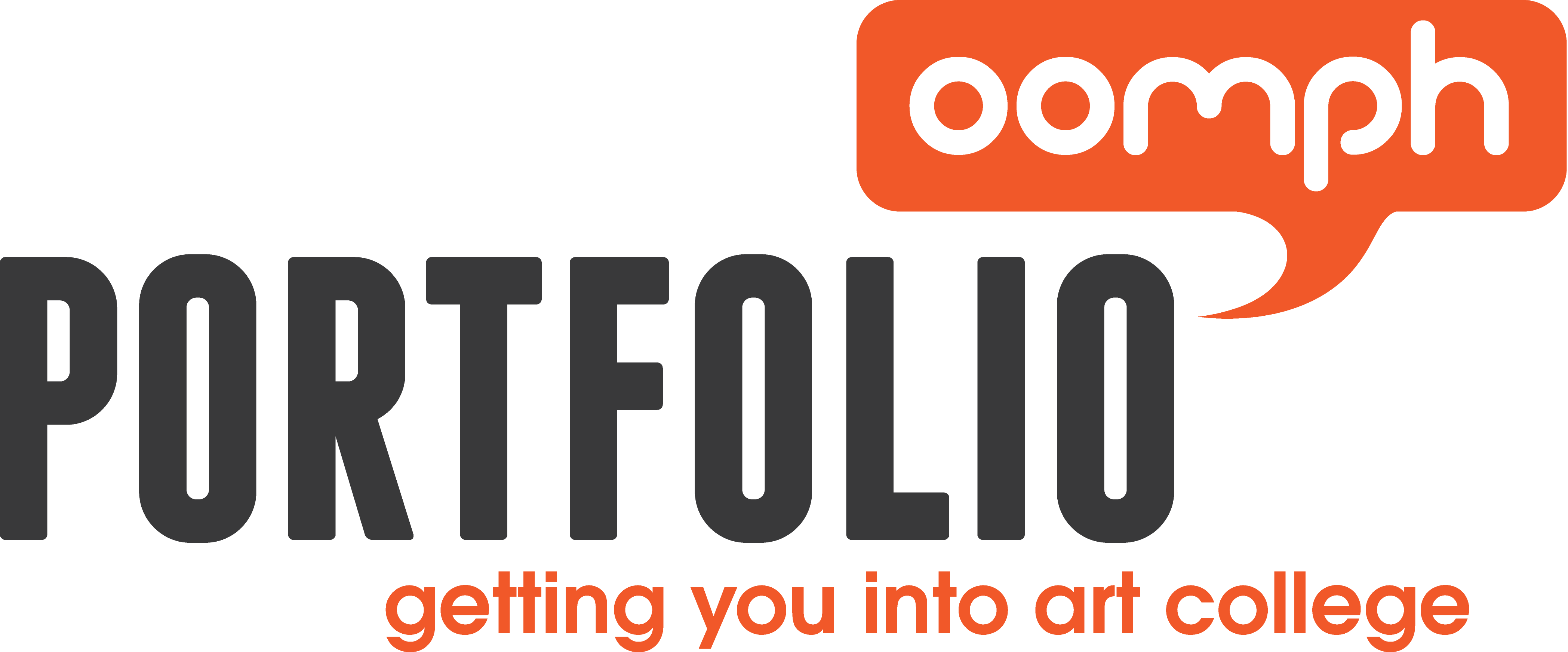
27 Mar Production Arts and Design Royal Conservatoire of Scotland
Scroll down for the video. Below is also the full *Transcript*
Royal Conservatoire of Scotland Production Arts and Design
So I was very much struggling in art. It got to a point where I nearly quit art because I wasn’t doing very well in it. Before Portfolio Oomph, I couldn’t really do anything ‘properly’. It was definitely more of SQA [Scottish Qualifications Authority, Scottish school exam system]. Very much of a guideline and Portfolio Oomph taught me to break out those guidelines and it was very helpful.
I then decided to contact Julie, since getting into art college, getting into any art university is way, way harder than everyone thinks and no one really understands how hard it is unless you go through it. So I was always incredibly stressed about that and 100%, if I had not done Portfolio Oomph, I would not have gotten in [to Royal Conservatoire of Scotland Production Arts and Design].
Yeah, I decided to contact Julie because I wanted to have the best opportunity to get in instead of doing a Foundation course, because that would be another year out and I’d rather just get straight into art uni.
Royal Conservatoire of Scotland Production Arts and Design
So working with Julie was, at the beginning, very interesting. And we did slowly bond, which I very much enjoyed as we got to know each other a bit better and spent more time together over zoom, and then got to know each other’s rhythms as well when doing art. I got to know her as an artist, she got to know me as an artist designer, and it definitely helped our relationship.
It’s been incredibly fun working with her. She’s definitely shown me how to come out of my comfort zone, which I was very, very sceptical of doing. But it worked for the best, basically.
I would definitely say finding things most helpful was the mark making that we did, because I’d never really done anything like it, because before that I had done very…. “Oh, if I get this line wrong, I have to rub it out”. Mark making is nothing like that.
It’s – if you get a line wrong, you get it wrong. Tough, like, that’s it! Going through the motion of marking things down with a kebab stick and ink or a stick or a rock or a piece of charcoal or dirt or whatever, was definitely incredibly helpful to me and it made me completely break out of my comfort zone. Which I was very happy about.
Charlotte studied for success on my bespoke mentoring programme.
Royal Conservatoire of Scotland Production Arts and Design
I was very, very happy to find out that I had gotten three offers from all three of my colleges/unis that I applied for. I applied for one down in Liverpool called Liverpool Institute for Performing Arts, one down Wales, called Royal Welsh College for Music and Drama. And then probably the hardest one to get into was the Royal Conservatoire of Scotland in Glasgow [Royal Conservatoire of Scotland Production Arts and Design].
And it was so stressful. There’s, I think, about 20 people in the whole year and 850 people in the whole school.
So it is absolutely tiny. So it’s definitely…it was definitely the place for me.
So it’s definitely been kind of like me leaving the nest in a sort of weird way. I feel a lot more independent when I’m doing my artwork, which I am happy about.
I would always constantly ask teachers, being like, you know, what do I do, what do I do, what do I do? And now I’m a lot more independent about it. I know what I’m doing. I know, okay, this is my idea. How do I go from A to B to C and so on.
If I have a problem I’m naturally very, I’m naturally very capable now of putting that into words, putting that into a plan, and then doing it now that I’ve finished with Julie, which I am very happy about. Beforehand, I was not.
So, yeah, it’s. It’s been….it hasn’t been ‘easy’, but it has been enjoyable. If you are really thinking and considering about doing art or design at all at Uni in general, I highly, highly, highly, highly, highly recommend this because when I look at the art I was doing two years ago, before I started working with Julie, it was not very good.
And I can definitely see a huge, huge improvement of my art, and so can all my art teachers at school. And I am happy that I managed to do it over Lockdown, where everyone was at home.
And once everything started opening back up, I managed to, you know, come out into the world as a kind of new-born artist.

This article was written by Julie Read, a leading educator in the Creative Industries, as featured in The Guardian newspaper, on a mission to create a legacy to ‘unlock your creative genius’.
My passion and mission is your art portfolio, to help to get you that place at college or university.
CLARITY, in particular around the creative process, sketchbooks, and what the Colleges actually want to see are the founding principles.



Sorry, the comment form is closed at this time.